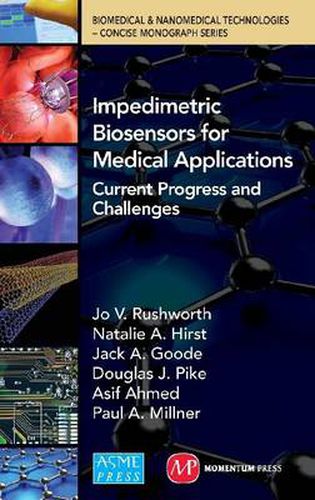Readings Newsletter
Become a Readings Member to make your shopping experience even easier.
Sign in or sign up for free!
You’re not far away from qualifying for FREE standard shipping within Australia
You’ve qualified for FREE standard shipping within Australia
The cart is loading…






This title is printed to order. This book may have been self-published. If so, we cannot guarantee the quality of the content. In the main most books will have gone through the editing process however some may not. We therefore suggest that you be aware of this before ordering this book. If in doubt check either the author or publisher’s details as we are unable to accept any returns unless they are faulty. Please contact us if you have any questions.
Up to 40 volumes are planned for this concise monograph series, which focuses on the implementation of various engineering principles in the conception, design, development, analysis and operation of biomedical, biotechnological and nanotechnology systems and applications.
In this monograph, the authors discuss the current progress in the medical application of impedimetric biosensors, along with the key challenges in the field. First, a general overview of biosensor development, structure and function is presented, followed by a detailed discussion of impedimetric biosensors and the principles of electrochemical impedance spectroscopy. Next, the current state-of-the art in terms of the science and technology underpinning impedance-based biosensors is reviewed in detail. The layer-by-layer construction of impedimetric sensors is described, including the design of electrodes, their nano-modification, transducer surface functionalisation and the attachment of different bioreceptors.
The current challenges of translating lab-based biosensor platforms into commercially-available devices that function with real patient samples at the POC are presented; this includes a consideration of systems integration, microfluidics and biosensor regeneration. The final section of this monograph describes case studies of successful impedance-based biosensors for the detection of a range of analytes from small molecules up to whole microorganisms. Finally, the authors put forward future perspectives for the clinical applications of impedimetric biosensors.
$9.00 standard shipping within Australia
FREE standard shipping within Australia for orders over $100.00
Express & International shipping calculated at checkout
This title is printed to order. This book may have been self-published. If so, we cannot guarantee the quality of the content. In the main most books will have gone through the editing process however some may not. We therefore suggest that you be aware of this before ordering this book. If in doubt check either the author or publisher’s details as we are unable to accept any returns unless they are faulty. Please contact us if you have any questions.
Up to 40 volumes are planned for this concise monograph series, which focuses on the implementation of various engineering principles in the conception, design, development, analysis and operation of biomedical, biotechnological and nanotechnology systems and applications.
In this monograph, the authors discuss the current progress in the medical application of impedimetric biosensors, along with the key challenges in the field. First, a general overview of biosensor development, structure and function is presented, followed by a detailed discussion of impedimetric biosensors and the principles of electrochemical impedance spectroscopy. Next, the current state-of-the art in terms of the science and technology underpinning impedance-based biosensors is reviewed in detail. The layer-by-layer construction of impedimetric sensors is described, including the design of electrodes, their nano-modification, transducer surface functionalisation and the attachment of different bioreceptors.
The current challenges of translating lab-based biosensor platforms into commercially-available devices that function with real patient samples at the POC are presented; this includes a consideration of systems integration, microfluidics and biosensor regeneration. The final section of this monograph describes case studies of successful impedance-based biosensors for the detection of a range of analytes from small molecules up to whole microorganisms. Finally, the authors put forward future perspectives for the clinical applications of impedimetric biosensors.